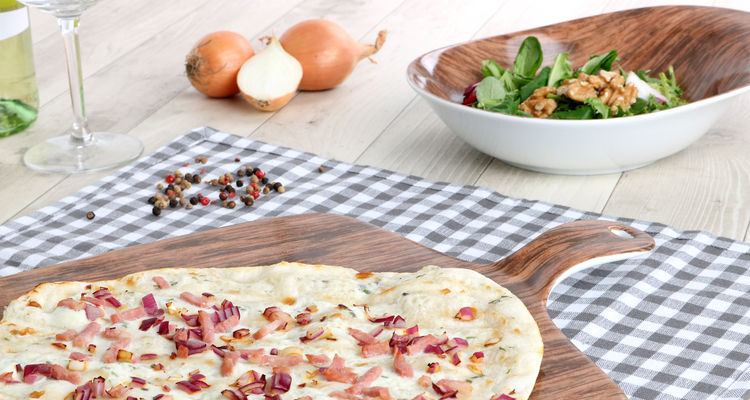Wood
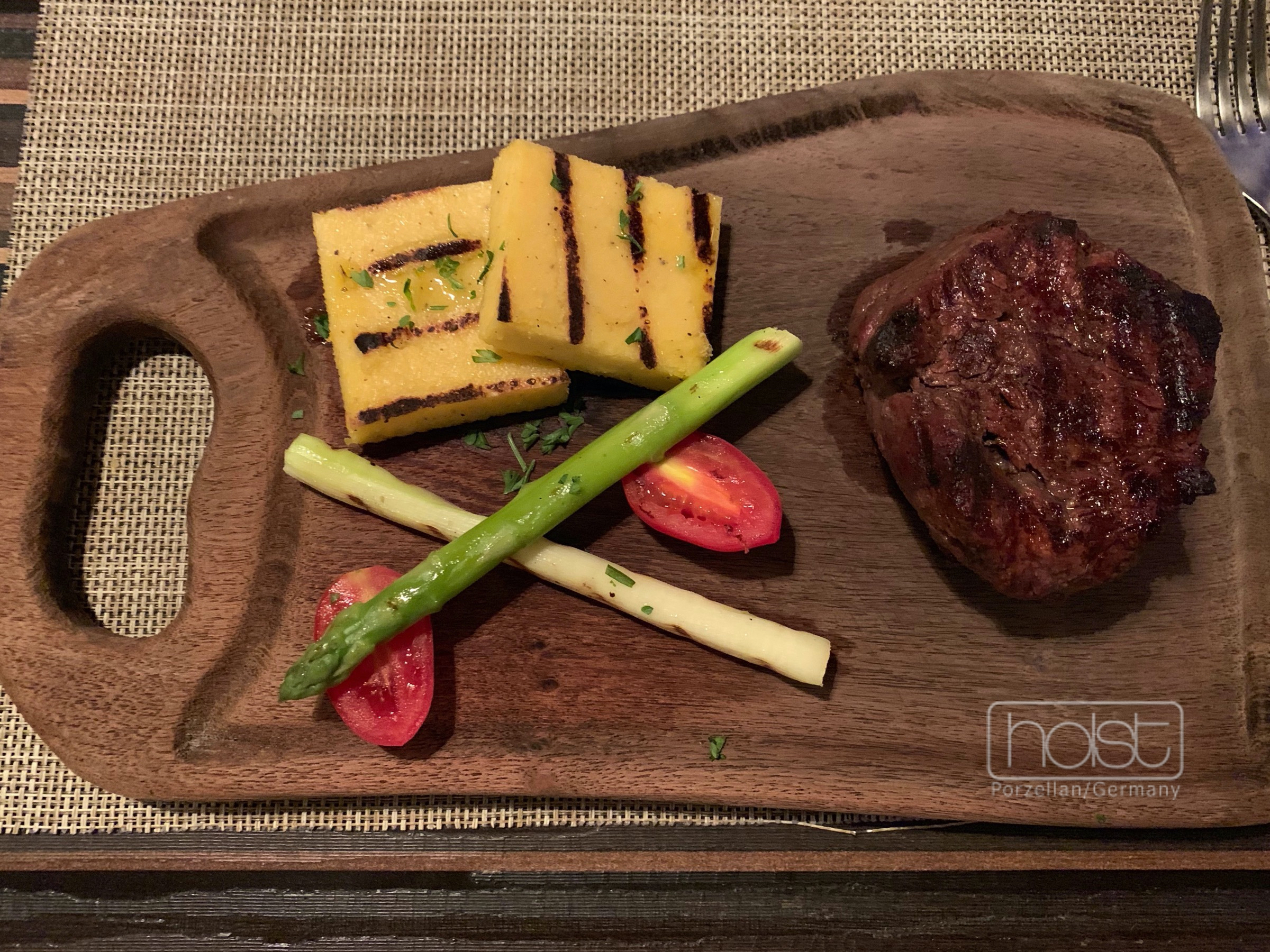
The trend towards unusual and modern food presentation means that catering establishments are constantly on the lookout for new ways to serve food in innovative ways. However, it is often forgotten that not every material is safe and suitable for contact with food. Many materials can only be used permanently with special application and care. Ignorance, superficially trained staff and a lack of space and time often mean that the necessary application and care instructions are not followed in the catering industry. Non-compliance can quickly lead to health risks.
Why is wood so "in"?

Wood is nature - wood is beautiful. Wood turns junk food into organic food?
Apart from the Braustüberl, which serves its bread in proper style on a wooden bark board, wood appeals to our senses with its earthy tones and soft, warm feel. The trends towards organic, sustainability, nature and environmental protection emphasise this perception.
Is wood food-safe?
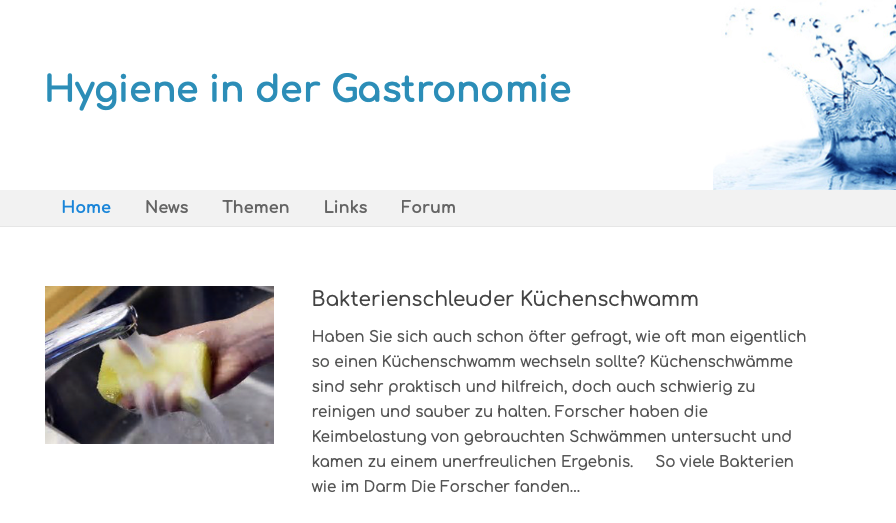
Conditionally!
There is no official definition of the term "food-safe". However, the so-called "Framework Regulation" (EC) No. 1935/2004 applies to all materials that are used in direct contact with food. With regard to safety and suitability for use, the requirements are based on the Foodstuffs and Commodities Act (LBMG); this is in accordance with the analogous "EU Directive 89/109 EEC"[2], which was replaced by "Regulation (EC) No. 1935/2004" in October 2004.
Untreated wood is only suitable for food use to a very limited extent.
Does wood kill bacteria?

No.
Although the tannic acids and resins released by the wood treatment curb the spread of germs and bacteria, the wood itself does not contribute to combating them. As I said: tannic acids!
Is wood antibacterial?

No.
The natural decay of wood, e.g. in the forest, is caused by sponges, fungi and bacteria. This fact alone proves this statement.
Any wood preservatives applied may have an antibacterial effect, e.g. tannic acids.
Does wood mold?
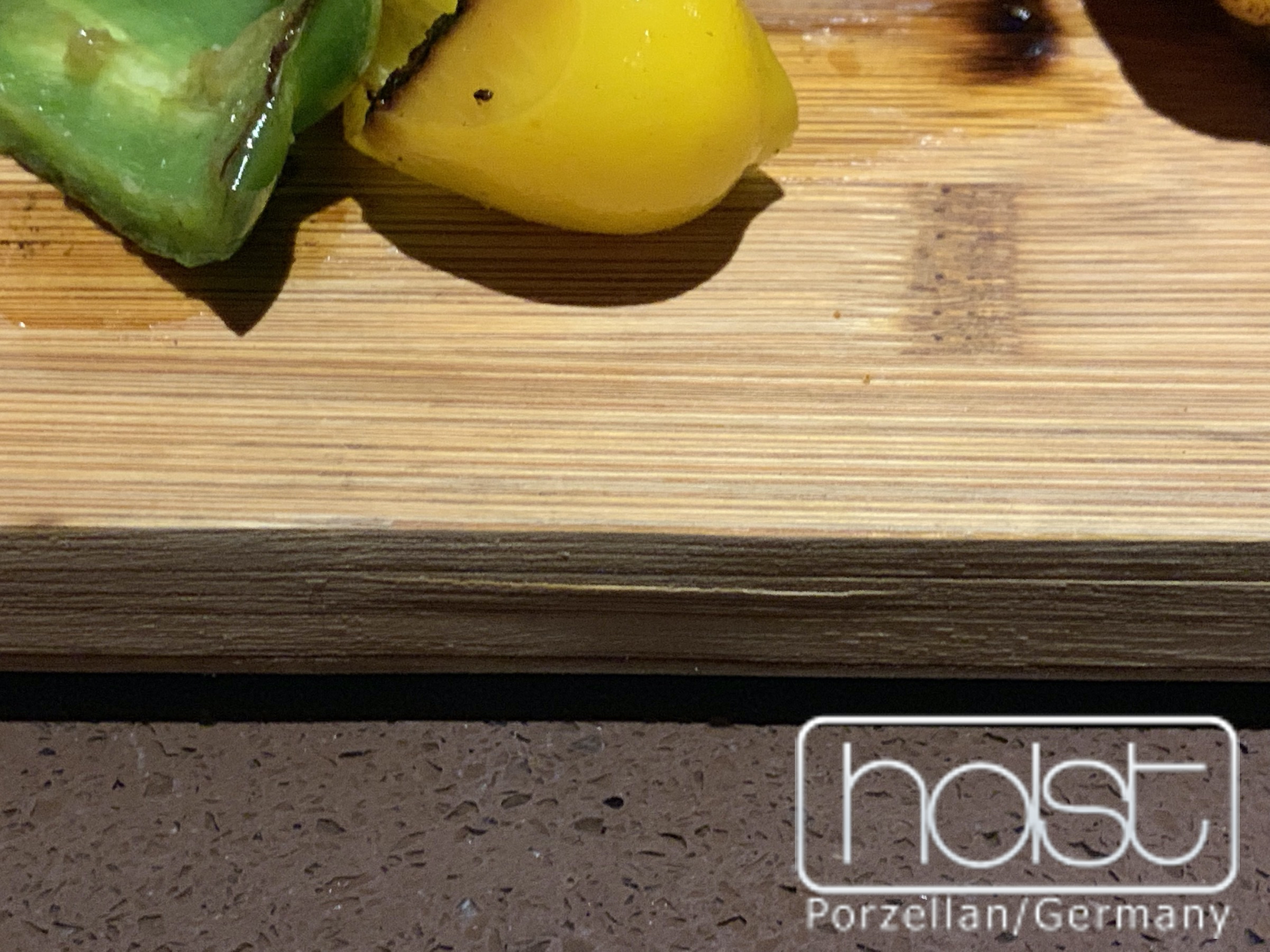
Yes.
Residual moisture can easily settle in the pores and openings, combine with residues of food, juices and meat blood and form mould spores and other pests.
Is wood easy to clean?
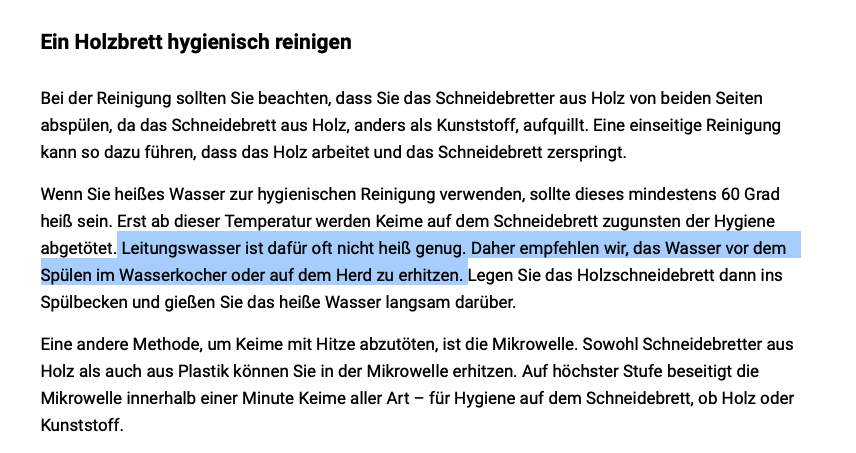
No.
Wooden crockery must never be cleaned in the dishwasher! A major manufacturer of wooden plates explains exactly how best to clean wood in its operating instructions (picture on the right). We believe that no catering business can carry out this type of constant cleaning in this way.
Is wood cut-resistant?
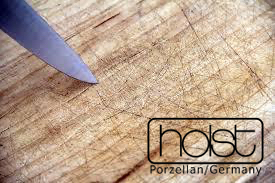
No.
Sharp knives have an easy time damaging the surface of wood and are therefore extremely conducive to a loss of hygiene. Some companies claim that cutting marks are good for hygiene as they release substances from inside the wood that kill bacteria. They are probably referring to resins and tannic acids.
Can wood splinters get into the food?

Yes.
As soon as a wooden serving board shows even slight damage, there is an acute health risk.
Is wood suitable for microwaves?
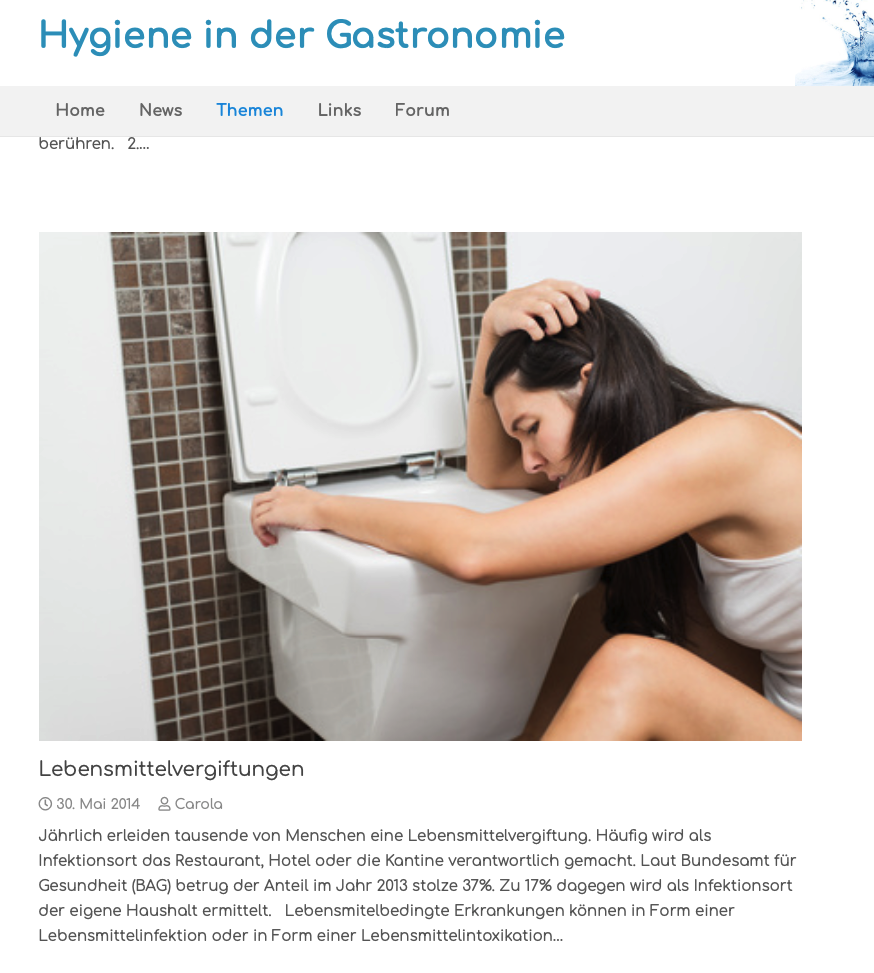
No!
Wooden dishes that are used regularly contain residual moisture - and of course resins and tannic acids, which can be deposited on the food as toxins. If residues of food, blood or sauces have settled in the porous wood and germs and bacteria have already formed, there is an acute health risk when heated in the microwave.
Do the legislators know these properties?

Yes.
Legislation allows the use of wood in compliance with food hygiene regulations. And this is where the circle closes - very few people can comply.
So what is wooden crockery suitable for?

Wooden dishes are only suitable to a limited extent for serving dry food that does not release any liquid or moisture itself. Even a salad garnish or a tomato no longer counts as dry food.
Does wood give guests a good feeling?
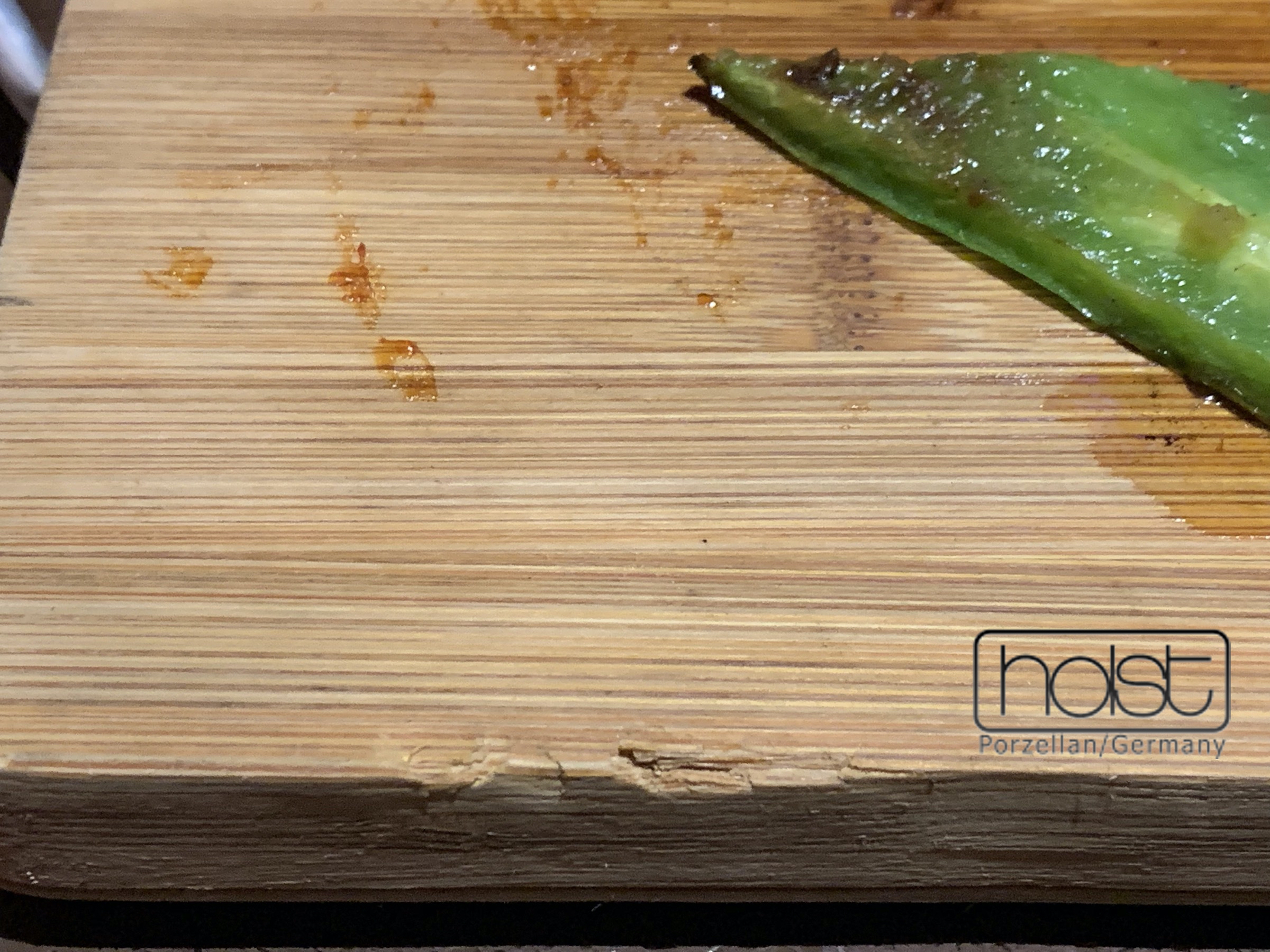
Yes.
It is undisputed that smells, colours and sounds influence human behaviour via the subconscious. Brown wood has a fundamentally positive stimulating effect.
Is wood hygienic?

No,
However, anyone who is only somewhat familiar with cleanliness, hygiene or kitchens will be equally uncomfortable and doubtful about the food on the wooden board.
Every chef's apron, tablecloth and napkin with stains that cannot be removed is removed from the guest's sight. At the same time, steaks, burgers and all kinds of dishes are served on stained, grainy and porous wooden boards. It's as if the maître d' is wiping his mouth with a touchon and then using it to place the plate on the pass: Disgusting!
Are there better alternatives?

Yes.
With the knowledge of the positive stimuli and associations with nature, the environment and sustainability, we at Holst Porzellan have thought about how these emotions can be realised with porcelain. We have combined this perception with the hygienic safety of porcelain! Porcelain is hygienic and 100% preventative! There is even a porcelain series from Holst Porzellan in wood design. More.
Porcelain gives 100% prevention
(Copyright by n-tv 2019-11-11)
- 100% Food-safe
- 100% Antibacterial
- 100% Mold free
- 100% Cut proof
- 100% Easy and fast to clean
- 100% Dishwasher proved
- 100% Splinter free
- 100% Oven proved
- 100% Microwave safe
- 100% Pleasant guest experience
- 100% Seemingly permanent service life
- 100% Innovation
- 100% Prevention
- 100% Gastronomic responsibility
Please refrain from using wood for catering purposes
Made from high-quality aluminium porcelain, we have developed the "Wood Design" series - porcelain with a wood look. Attractive, softly flowing shapes combine the wood decor with its natural guest appeal and the guarantee of cleanliness and hygiene thanks to the white undersides of the crockery items. Wood Design is not only beautiful, but also unique and 100% suitable for the catering trade!
Conscientious hosts give their guests peace of mind!
And if you would like to find out how this unique decor is produced, why not take a look inside the factory?

